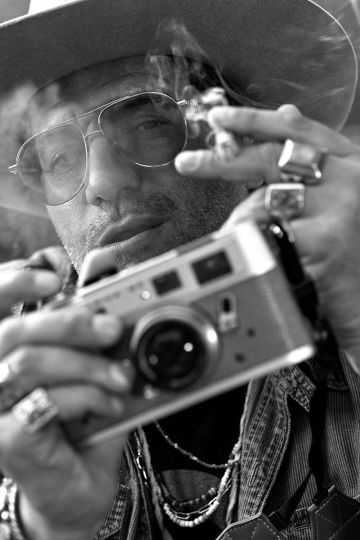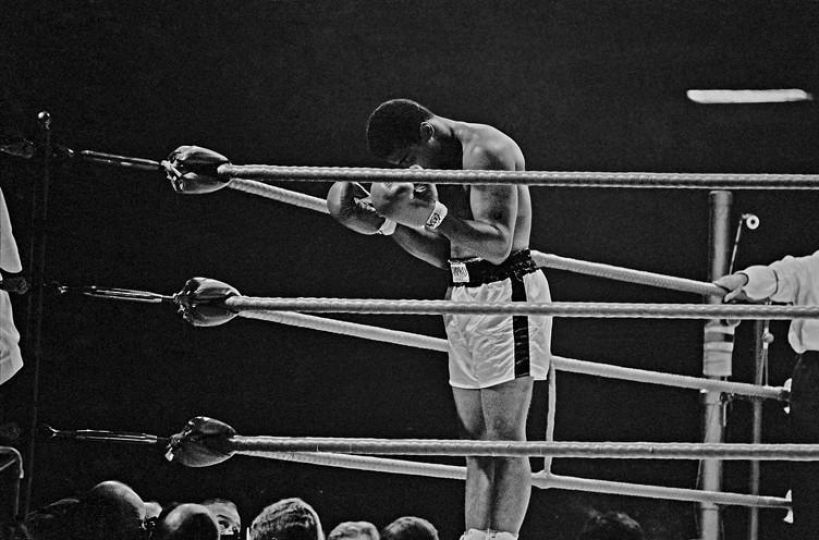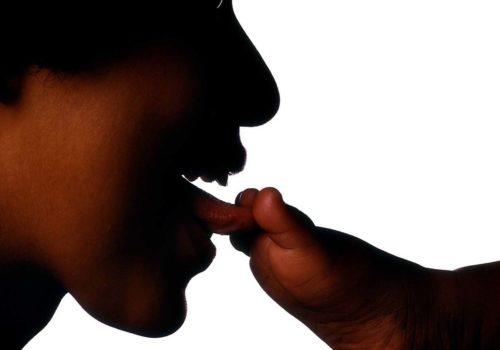Per Bernal is a Swedish-born, LA-based photographer whose lens has transformed the dedication and discipline of physique and fitness into art. With a career spanning close to four decades, and over 1,000 magazine covers, Per Bernal has had an unmatched influence on fitness and bodybuilding photography.
Bernal’s imagery has graced the pages of some of the most prestigious and influential magazines in the health and fitness industry including “Muscle and Fitness”, “Men’s Fitness,” “Men’s Journal”, “Shape”, “Flex” and “Train”. Per’s dynamic images have become iconic in the world of bodybuilding and fitness, capturing athleticism and artistry in his photographs.
Bernal’s new era reconnects him to his origins of portrait photography, as he debuted his latest project in the fall of 2023 in collaboration with Paris Chong, Director of Leica Gallery LA, “Faces of Leica.”
This was a unique and visually striking showcase that captured the essence of the Los Angeles photography scene and celebrated the individuals who have shaped it. Held as an exclusive pop-up at the Leica Annex within the Ren Gallery in Downtown Los Angeles, the exhibition highlighted the faces behind the work of a diverse group of accomplished Leica photographers, each renowned for their unique approach to visual storytelling.
Website: www.perbernal.com
Instagram: perbernalphoto
Event & rental website: www.fotastudio.com (under construction)
Faces of Leica: https://leicagalleryla.com/wp-content/uploads/2023/10/Faces-of-Leica-Press-Release-New-Draft-1.pdf
How did the idea for the exhibit come about?
In early 2023 I had a vision of having my first solo art exhibit. This came during a visit to the LA Art Show and a privately held event in DTLA (Downtown Los Angeles). While perusing the gallery and admiring the art, I knew then and there that this was what I really wanted. My very own show with new portrait work and with life-sized prints.
I had felt so lost during and after the pandemic and suddenly I just felt such purpose and drive again. Almost overnight I went to work, refining my craft, shooting friends and strangers alike almost daily for the next two months, with focus on black & white portrait photography and lighting.
The goal was to find a style that resonated with me and also find my way back to a type of photography I had done in the late 80’s and early 90’s while shooting models for the top agencies in Sweden. I always felt that my portrait game had been strong in this area but had never gotten the opportunity to grow this further, as my work as a bodybuilding “shooter” started to take off internationally and I felt compelled to follow the money. But the curiosity and the “what if” was still strong and alive and it became a motivating force in exploring the boundaries of my portrait photography and to find out if I had what was needed.
A few months later, in June of 2023, I was invited to a pop-up show in Santa Monica, hosted by Paris Chong, director of Leica Gallery LA. While there Paris asked me about my plans for the future and I spoke candidly with her about getting back into portraiture, branching away from the fitness photography I have made a career out of shooting, and returning to my roots.
Paris and I had discussed working together in the past, but that day she suggested that we do a pop-up together, where I would shoot portraits of 8-10 LA-based Leica photographers, for a small event that would feature their portraits together with 2-3 pieces of their own work.
What started with 8-10 photographers grew quickly into “Faces of Leica”, an exhibition of over 40 portraits, featuring the premiere Leica photographers in Los Angeles, captured over a 10-week period, and debuted at the Ren Gallery in Downtown Los Angeles on November 4, 2023. We had a record number of 600+ people show up to our opening night and it was such rewarding and humbling experience to see my own art on the walls. What had started as a goal just 10 months earlier had manifested itself through hard work, reinvention, and collaboration with Paris Chong and all her artist friends and photographers.
What was your approach in producing this series?
My approach to producing this series was rooted in empathy and creating a comfortable environment for the subjects. As a photographer, I understand how unsettling it can be to step in front of the camera when you’ve spent your career behind it. My goal was to ensure that everyone I worked with felt safe and at ease, knowing they’re in capable hands. I saw this project as an act of service to the photography community. Hence the name of the show – Faces Of Leica – the people behind the wonderful photography we get to look at and enjoy daily.
I believe my strength lies in helping people drop their guard and feel completely accepted. By focusing on connection rather than performance, I allow them to just be themselves. When someone truly sees you—when they look at you and genuinely understand you—it can be incredibly reassuring. That’s the feeling I aim to evoke in my subjects and to capture that onto film. I try to read the energy in the room, and if I sense any discomfort, I lighten the mood with humor to help them relax. It’s all about creating an atmosphere where they feel comfortable enough to open up.
From shooting Kwaku Alston at his studio in Agoura Hills, to shooting Victory Tischler Blue with her horses in Palm Springs, I wanted to capture each artist in their most natural environment.
Describe your technical process in shooting portraiture.
As a photographer I have used almost every camera brand under the sun. My favorite cameras in no particular order when shooting portraits with film was Mamiya RZ67, Pentax 67 and Rolleiflex 6008. In later years I’ve been shooting exclusively with digital cameras from PhaseOne and Nikon. My bread-and-butter system was the Nikon D850 and now the Nikon Z9.
For the “Faces of Leica” project, Leica Store LA loaned me the 47-megapixel Leica SL2 camera outfitted with the Leica Vario-Elmarit-SL 24-90/f2.8-4.0. All portraits in the “Faces of Leica” series was shot with this kit. I had never used the SL2, but quickly adapted and appreciated its similarities to my own M camera including the famous “Leica look’ that defines this brand. While not as fast or accurate as the Nikon Z9 in terms of capture rate and autofocus, the SL2 forced me to slow down and approach my shooting more deliberate, almost as when shooting with a medium format camera. I ended up with a 1/3 of captures compared to when using my Nikon, but with improved composition, sharpness and looks.
How you light subject is key when taking on a project. Besides camera angles, optics and sets, your lighting is what defines you as a photographer and also how you develop a brand identity and look. With Faces of Leica, I had to decide how to best capture the talent while staying authentic to my own voice. I went through and tested a plethora of lighting scenarios, carefully weighing pros and cons. Since a majority of the shoots would be on location and where I and my assistant had to work discretely and quickly, I decided to limit my lighting to one strobe. Depending on the scenario, I ended up using either a small Proto A10 on-camera flash w/reflector adapter, a Profoto B10 battery flash, or for bigger sets and more power, a Godox AD 1200 Pro.
These could all be handheld or used on a compact light stand. For the male talent I would either use a 7-inch grid reflector for a contrasty light or a diffused white umbrella for a softer wrapping light. For the females, a diffused white umbrella, an octabank or a white beauty dish with grid for a softer approach.
I like to use ambient light mixed with strobe, where I can shape the light while keeping the natural balance and integrity of a scene. I often use the flash as a fill light to open up a shadowed face or area, or a high speed/hyper sync setting to create a shallow depth of field while darken the background and sky and enhance the strobe effect. This setup allows the person to always stand out while maintaining a natural, unobtrusive atmosphere that enhances their presence without overwhelming it. It’s a blend of simplicity and subtle balance, with the ultimate goal of making the talent feel truly seen.
For the “Faces of Leica” project, I choose to make all images in B&W, as I felt it was the best way of representing the Leica brand and what its known for. Additionally, this would make the exhibit more cohesive as the element of color sometimes compete with the subject matter and message in a way contrary to B&W. Imo, 40+ portraits in color would have made the show much more difficult to both shoot and hang. But perhaps the most important argument is that the B&W media has always been my first love and what best represents me as a photographer.
Who are your influences?
My influences include legendary photographers like Herb Ritts, Bruce Weber, Richard Avedon, Irving Penn, and Annie Leibovitz.
Herb Ritts, more than anyone else, inspires me with his minimalistic approach and mastery of black and white photography, capturing the raw beauty of the human form.
Bruce Weber’s storytelling through natural light and candid moments influences my focus on authenticity.
Richard Avedon’s bold, vulnerable portraits push me to reveal the essence of my subjects, while Irving Penn’s versatility and attention to detail shape my composition and lighting choices.
Annie Leibovitz’s ability to blend artistry with emotional depth in celebrity portraiture inspires my approach to creating personal, narrative-driven images. Her mastery of color photography and portraits makes her one of the very best in the world and I love her lighting technique and composition and I often use her work as both an inspiration and point of reference. Together, they shape how I see and capture the world.
What are you working on now?
Over the summer, my studio in Marina del Rey underwent extensive renovations, transforming it into a dynamic creative hub catering to a variety of needs. It now serves as a multifunctional space for artists to collaborate, host events, and showcase their work. In addition to its role as a rental studio for photo shoots and film productions, I plan to use the space and invite other artists to have pop-up galleries that provide local and visiting artists a platform to exhibit their creations.
I also plan to use the studio to offer a series of specialized live, video streaming and podcasted workshops designed to help photographers of all levels refine their skills. These workshops cover topics such as lighting, composition, and working with models, providing hands-on experience that allows participants to enhance their portfolios.
Alongside its artistic initiatives, the studio has expanded into the business sector by launching a branding agency that helps personal brands and companies develop their visual identities. This includes everything from logo design and social media strategies to professional headshots and marketing collateral. My studio space is open and welcome to all creative endeavors.
Text & Interview by Patricia Lanza







































